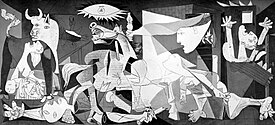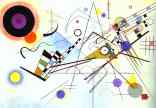Lecture on Modernism
Busy week. Sometimes, there’s just no way around taking in papers in every class you teach. This week was one of those times.
That’s my excuse for the lack of material in the past few days.
And in order to avoid having to make an excuse for the next couple of days, I’m just going to post the rough drafts of my lectures for my Science Fiction class, which means that you all (all six of you) will get to learn about Modernism, Postmodernism, and what those two terms have to do with current science fiction. Yay!
Lesson one is on Modernism.
Western culture (which means Europe and the US, for the most part) goes through cultural periods; you’ve probably heard of some of them. The Rennaissance, the Enlightenment, Romanticism, the Victorian Age — those sorts of things. These periods are defined by the trends that go on in philosophy, science, literature, art, music, and politics (to name just a few things).
We’re concerned with the Modern period and the Postmodern period since the vast majority of all science fiction can be said to be the products of these two periods.
First, Modernism. Modernism came about in part because of the industrial revolution (which happened in the early 1800s). These sorts of dates aren’t like the war of 1812; it’s a little harder to pin down a change in culture. But people who know these things usually say that Modernism started somewhere around 1880 or 1890.
Modernism was critical of society. It didn’t trust progress. It was revolutionary. But it did have faith in rationality and it was holistic. A wikipedia entry says that “modernism attempted to wrest universal principles from situations.”
Let’s start with this famous painting by Magritte:

Those French words mean, “This is not a pipe.” Magritte’s point was that his painting was in fact, not a pipe! It was a painting of a pipe, and the sooner we all admit that, the better off we’ll be. See, man, you’ve got to look beyond your subjective view of the world to the foundation underneath — the underlying truth.
From here, art moves toward color and shape, away from its attempts to depict things realistically. Check out cubism:

or artists like Kandinsky:

Or we can move away from art into psychology! Take Freud, who claimed the “mind had a basic and fundamental structure,” (a foundation — an underlying truth) “and that subjective experience was based on the interplay of the parts of the mind. All subjective reality was based, according to Freud’s ideas, on the play of basic drives and instincts, through which the outside world was perceived” (wikipedia).
That’s it. That’s Modernism. In short, they claimed that there was an underlying truth, but that you had to get beyond your subjective experience of reality.
